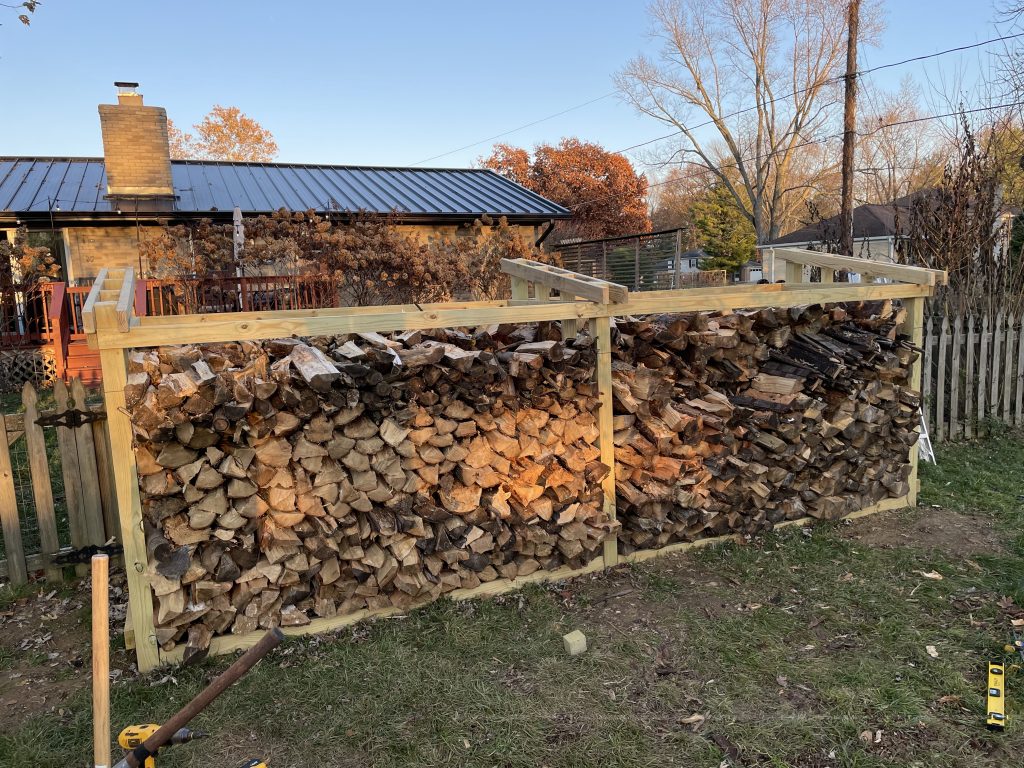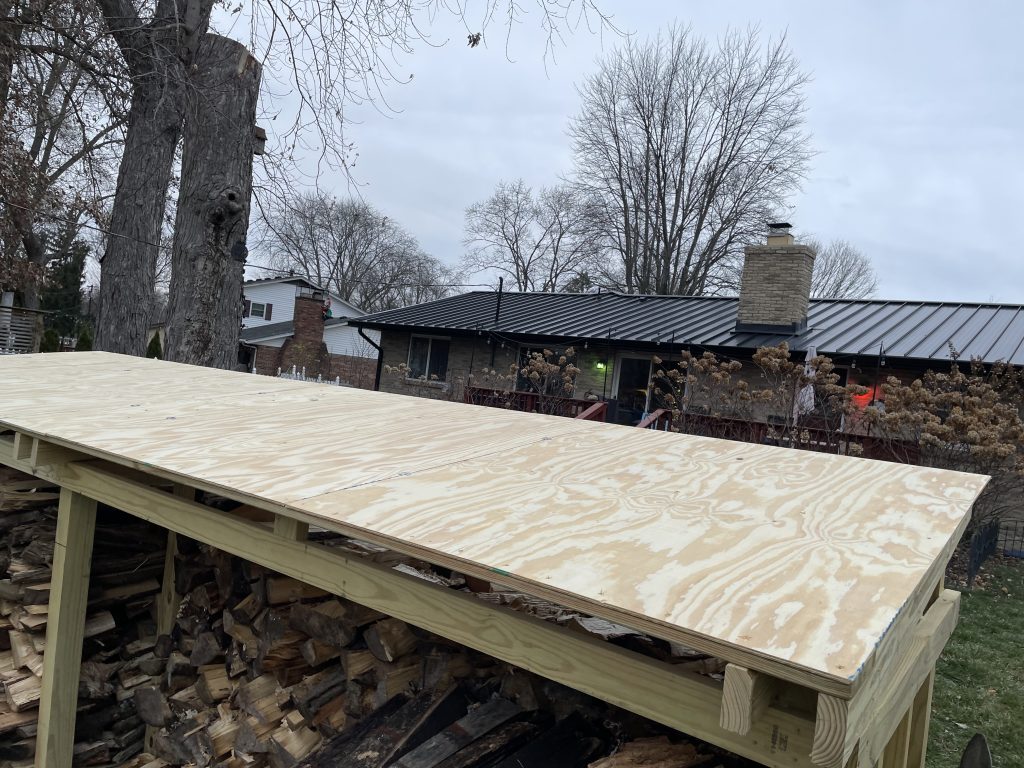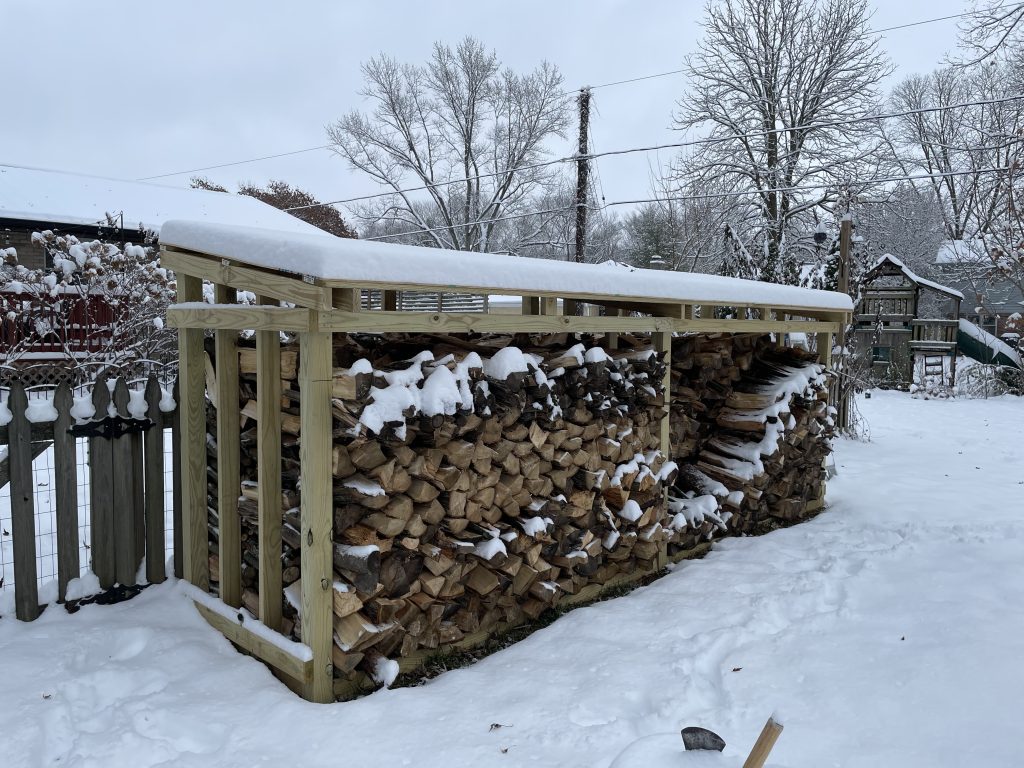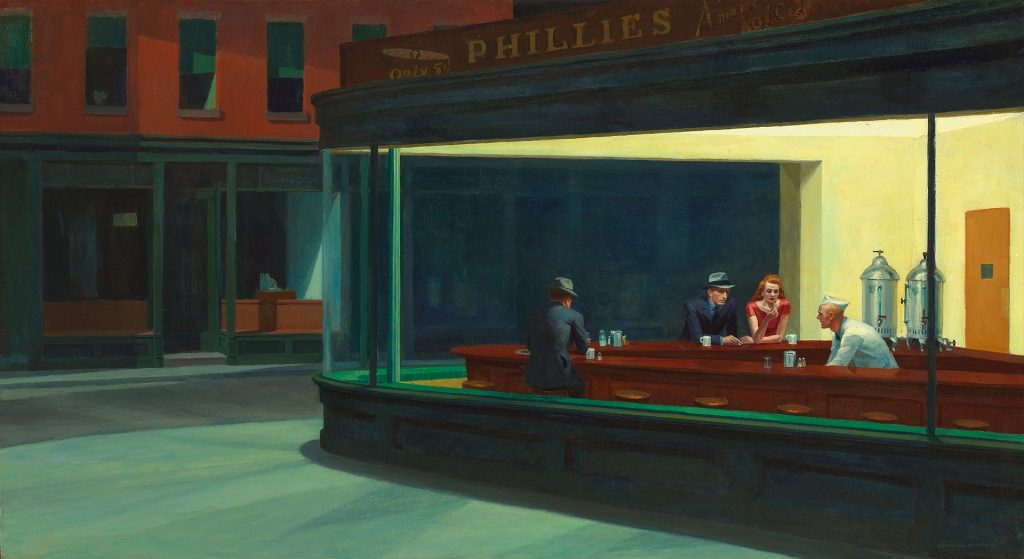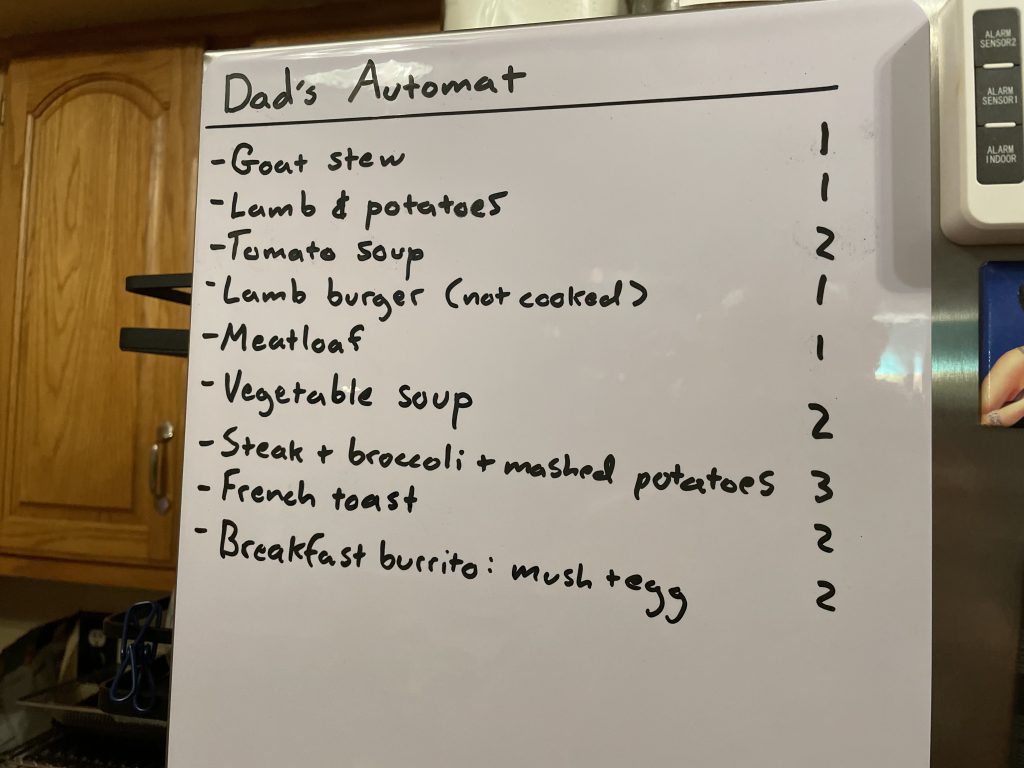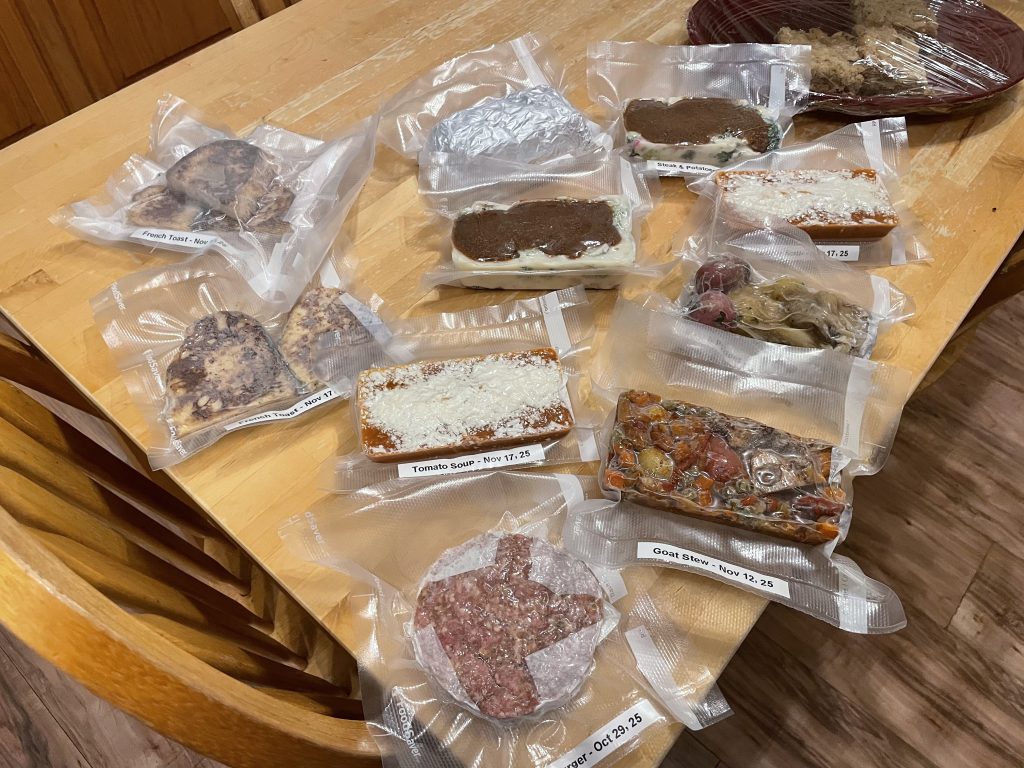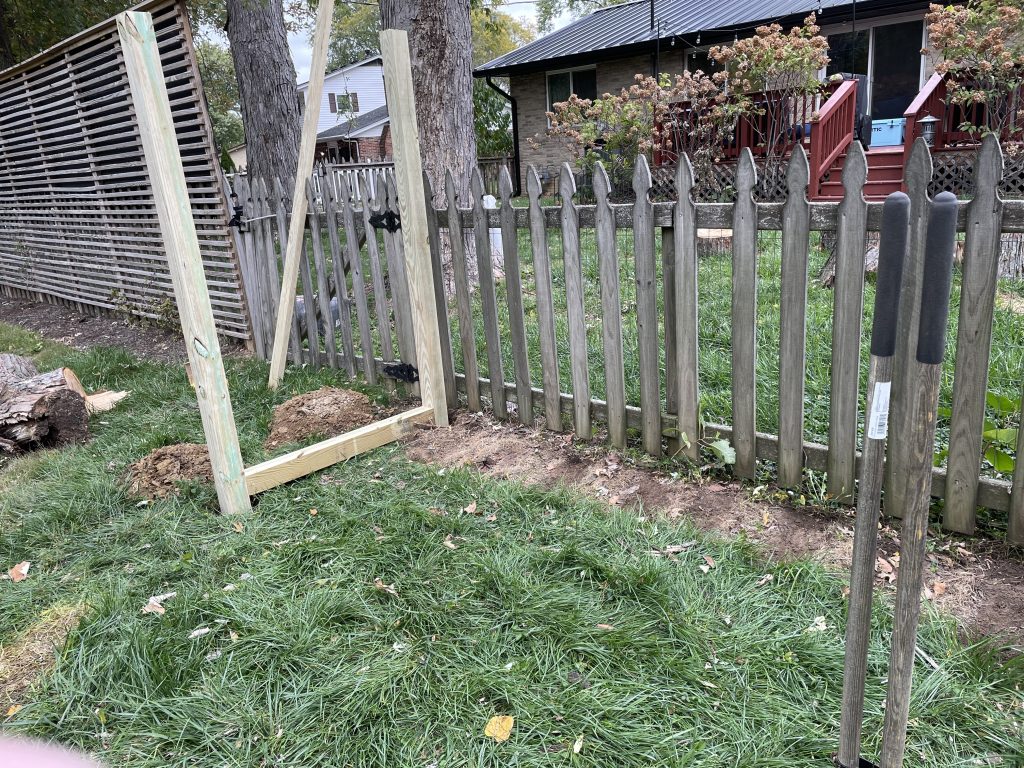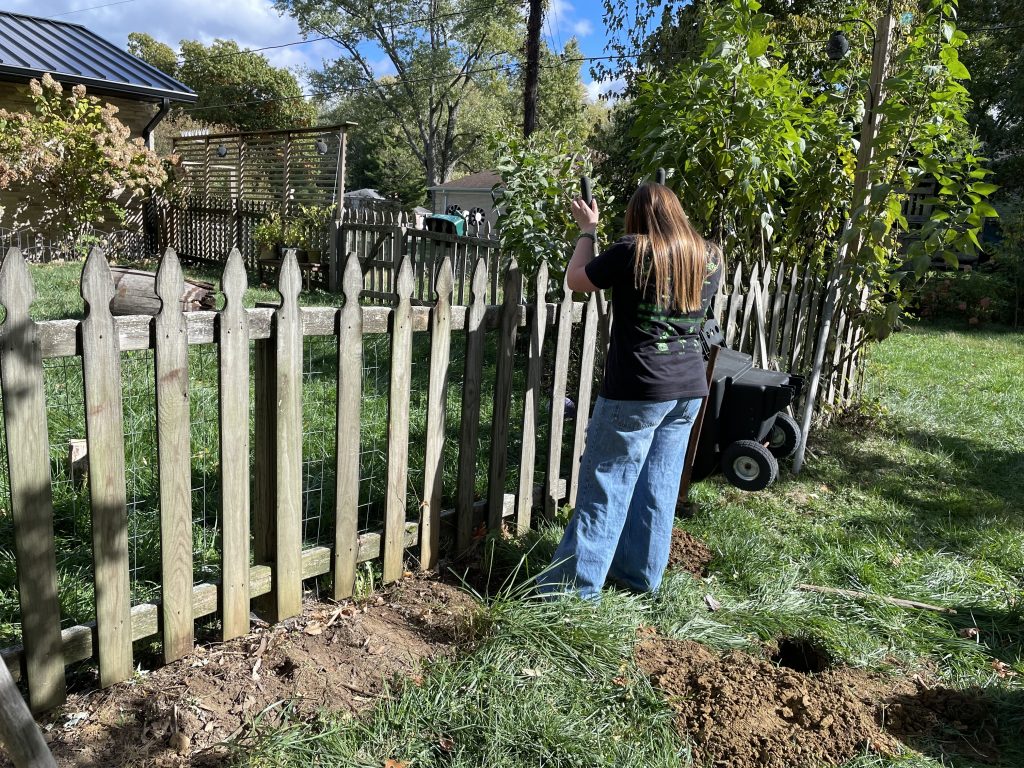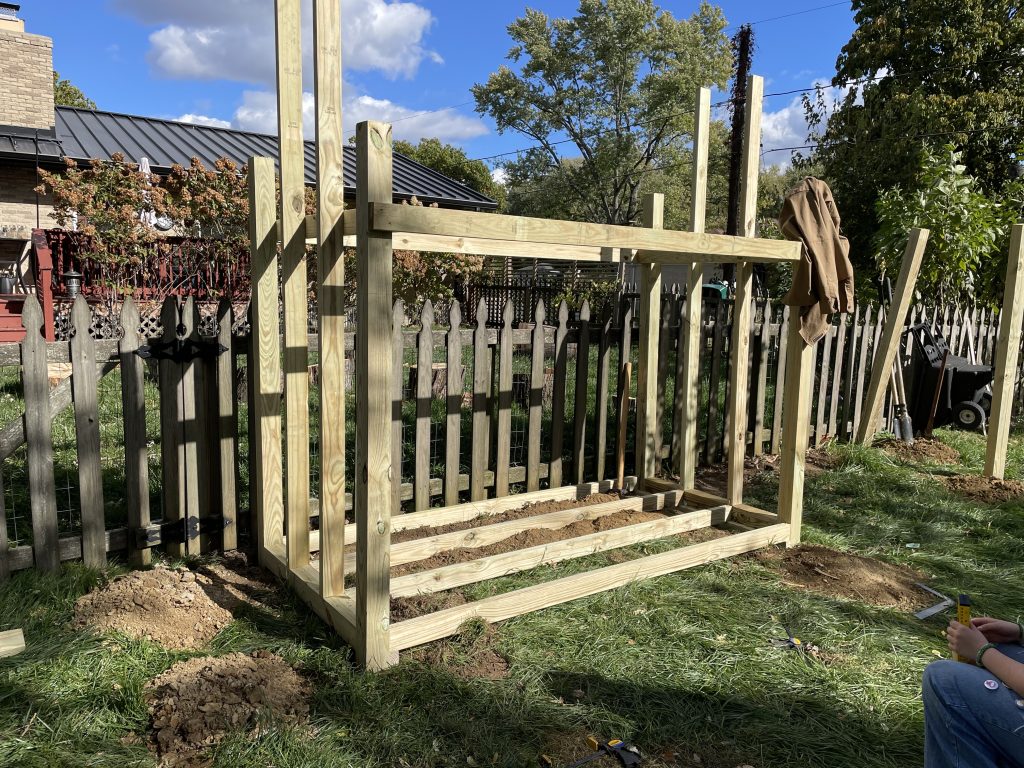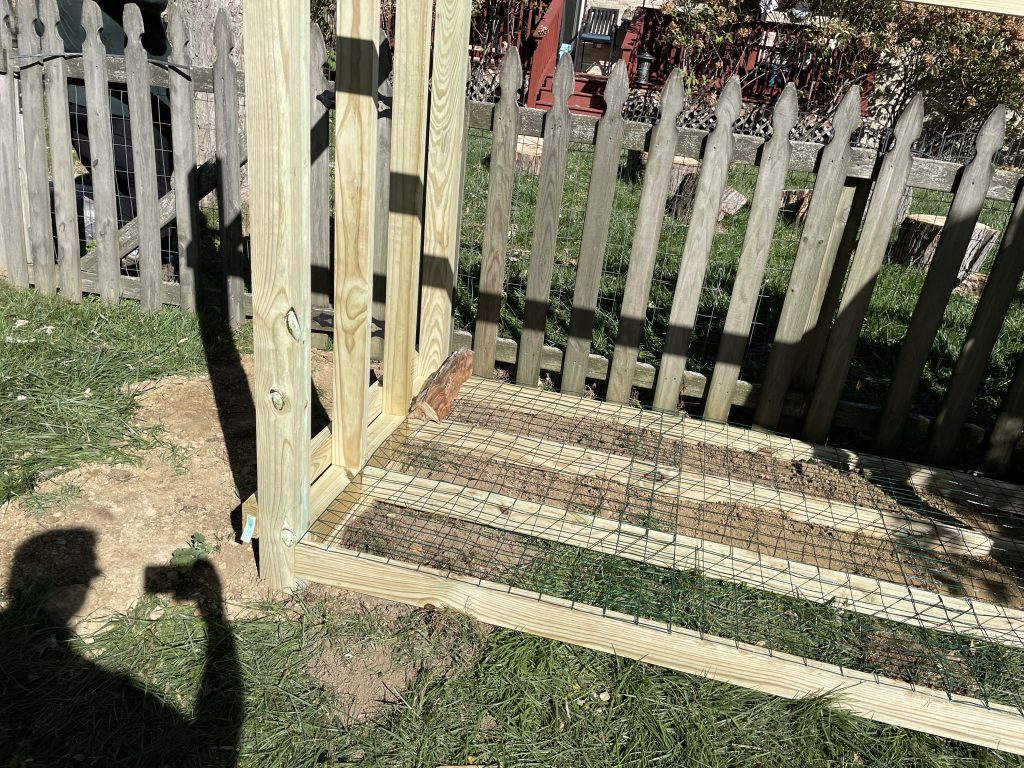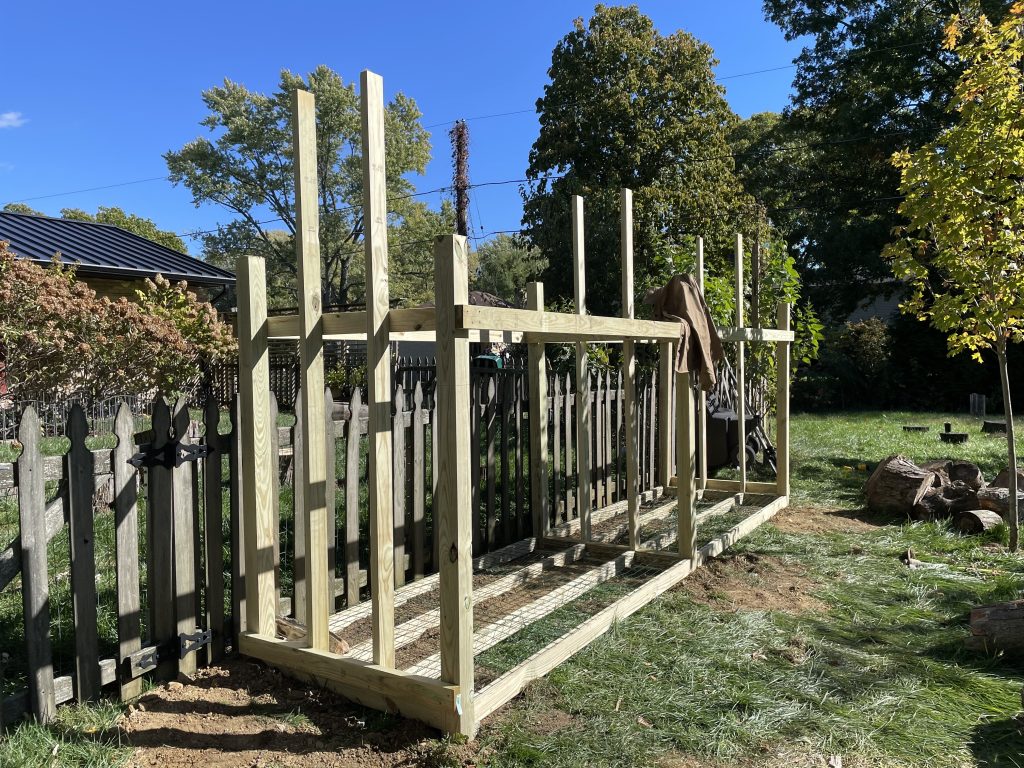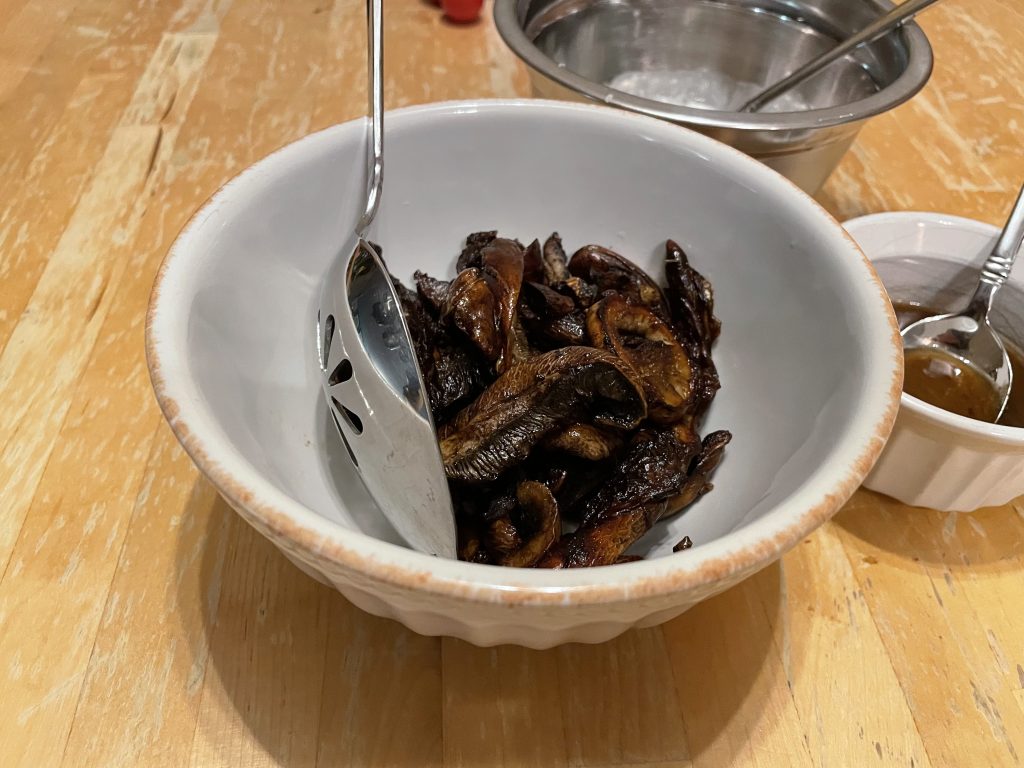Or two!
…which is the most aggravating unit of measure. A cord of stacked firewood, which measures 4’x4’x8′, does not conveniently fit within any structure made of lumber, whose standard dimensions come in 4′ or 8′. Because the internal dimensions necessitate the outer frame to be longer, otherwise the wood cannot be overlapped in order to attach screws. What I needed was 4′,4″ and 8′,6″ boards, but they’re not sold in those lengths. So I had to buy 10′ versions, which was more expensive and generated a lot of waste.
But dammit, I would not be deterred. The accumulating piles of wood from my trees, due to easement reclamation, fungal disease, hurricanes, and general pruning, has left me with quite the back-logs (ha!). I wanted to finally process it all, and I wanted to stack firewood in exacting measurements, as well as be sure that future firewood providers were being truthful. So 10′ boards it would have to be, cut down to give me those exacting lengths.
Taking a cue from my previously-built tomato trellis, which is still firmly standing 5 years later, I opted for 4x4s, stuck 2 feet deep. That’s the maximum depth I can get post diggers down to, and historically that’s been sufficient to stay below the frost line. I doubt that with the weight of the wood that frozen ground pushing my posts out would be a problem anyway, but I’d rather not have to build this again. The rocky soil was certainly a pain, but fortunately I had supplemental manual labor to employ.
A bad design of engineering is to rely upon connecting hardware for load-bearing applications, so the supporting boards, which would hold the firewood off the ground, were rested upon sunken 2x4s, screwed into the outer frame. The goal being, the vertical support would rest directly upon the ground, rather than relying upon the main structure.
But not all firewood is cut to the same length, so in order to prevent smaller pieces from touching the ground, I installed fencing wire to shore up the gaps.
One cord down, I added a second identical section.
There are plans for a roof, using leftover metal sheeting from the house roof. I’m hoping it will match nicely, but the more pressing matter was to get the wood split and stacked for the changing seasons. And with the help of a newly-purchased splitter, it only took several weeks! Damn was that a lot of wood!
I’m glad that’s done. The wood situation needed addressing and I had been planning a storage solution for years. More pics to come once the roof is installed, but I’ll need some more time off for that. Hoping to wrap this up for 2025!
–Simon
